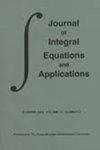具有RCLL势垒的非均匀简单Lévy过程驱动的反射BSDE
IF 0.9
4区 数学
Q2 MATHEMATICS
引用次数: 0
摘要
在本文中,我们研究了一个由具有rcll反射势垒的非齐次简单Lévy过程驱动的后向随机微分方程的解。当系数为随机Lipschitz时,我们利用Snell包络和不动点定理证明了解的存在性和唯一性。在应用方面,我们提供了莱维市场上美国期权的公平价格。介绍后向随机微分方程理论(简称BSDE)是由Pardoux和Peng[25]发展起来的。由于这些方程与数学金融[10,8]、随机控制和随机博弈[7,15,17,16]的联系,它们引起了人们的极大兴趣。最近有很多关于这个主题的研究,在谈论这些研究时,我们不能不提到司徒的研究[29],该研究是关于布朗运动和泊松点过程驱动的BSDE。除了Nualart和Schoutens[24]的研究之外,他们还确定了由Lévy过程驱动的BSDE的解的存在性和唯一性。此外,Bahlali等人[1]的伟大研究中,他们处理了BSDE由布朗运动驱动的情况,以及与独立Lévy过程相关的Teugels的鞅。最后但同样重要的是,El Jamali和El Otmani的[5],其中我们建立了当系数为随机Lipschitz时,由非齐次Lévy过程驱动的BSDE解的存在性和唯一性。在布朗过滤的框架中,ElKaroui等人[11]引入了反射BSDE的概念。与系数f、终端值ξ和势垒L相关的这种方程的解是三重过程(Y,Z,K)实现: Yt=ξ+ξT T f(s,Ys,Zs)ds+KT−KT−ŞT T ZsdBs。对于所有t≤t,Yt≥Lt P−a.s。连续增加过程K的作用是向上推动过程Y,以使其以最小的能量保持在势垒之上,即,ξT0(Yt−Lt)dKt=0。这种类型的BSDE的动机是对美式期权定价[9]和研究混合博弈问题[18]。Hamadène和Oukinne[19]建立了对具有跳跃的反射BSDE情况的扩展,即首先是由布朗运动和独立泊松点过程驱动的标准反射BSDE。其次,Essaky的[13]研究了具有跳跃和右连续左手受限(简称rcll)障碍的反射BSDE。第三,El Otmani[12]考虑了由布朗运动驱动的反射BSDE,以及与纯跳跃无关的Lévy过程和rcll障碍相关的Teugels的鞅(参见例如[14,27,30])。最后但并非最不重要的是,Lü[23]处理了由布朗运动驱动的反射BSDE和martingales 1991 AMS数学主题分类的情况。60H20、60H30、60J75、65C30。本文章由计算机程序翻译,如有差异,请以英文原文为准。
Reflected BSDEs driven by inhomogeneous simple Lévy processes with RCLL barrier
In this paper, we study the solution of a backward stochastic differential equation driven by an inhomogeneous simple Lévy process with a rcll reflecting barrier. We show the existence and uniqueness of solution by means of the Snell envelope and the fixed point theorem when the coefficient is stochastic Lipschitz. In term of application, we provide the fair price of the American option in Lévy market. Introduction. The theory of backward stochastic differential equations (BSDEs for short) was developed by Pardoux and Peng [25]. These equations have attracted great interest due to their connections with mathematical finance [10, 8], stochastic control and stochastic games [7, 15, 17, 16]. There have been many studies done on this topic lately, and we can’t talk about those studies without mentioning the Situ’s one [29], which was on BSDEs driven by a Brownian motion and a Poisson point process. In addition to the study of Nualart and Schoutens [24] who have established the existence and uniqueness of solutions for BSDEs driven by a Lévy process. Also, the great study of Bahlali et al. [1] in which they treated the case where the BSDE is driven by a Brownian motion and the martingales of Teugels associated with an independent Lévy process. And last but not least, El Jamali and El Otmani’s [5] in which we have established the existence and uniqueness of solutions for BSDEs driven by an inhomogeneous Lévy processes when the coefficient is stochastic Lipschitz. In the framework of a Brownian filtration, the notion of reflected BSDE has been introduced by ElKaroui et al. [11]. A solution of such an equation that is associated with a coefficient f , terminal value ξ and a barrier L, is a triple process (Y,Z,K) Achieving: Yt = ξ + ∫ T t f(s, Ys, Zs)ds+KT −Kt − ∫ T t ZsdBs. Yt ≥ Lt P− a.s. for all t ≤ T. The role of the continuous increasing process K is to push upwards the process Y in order to keep it above the barrier with minimal energy, that is, ∫ T 0 (Yt − Lt)dKt = 0. This type of BSDEs is motivated by pricing the American options [9] and studying the mixed game problems [18]. The extension to the cases of reflected BSDE with jumps, which are first, a standard reflected BSDE driven by a Brownian motion and an independent Poisson point process, has been established by Hamadène and Ouknine [19]. Second, Essaky’s [13] studied on the reflected BSDEs with jumps and right continuous left hand limited (rcll for short) obstacle. Third, El Otmani [12] has considered a reflected BSDE driven by a Brownian motion and the martingales of Teugels associated with a pure jump independent Lévy process and rcll obstacle (see e.g. [14, 27, 30]). And last but not least, Lü [23] who treated the case where the reflected BSDE driven by a Brownian motion and the martingales 1991 AMS Mathematics subject classification. 60H20, 60H30, 60J75, 65C30.
求助全文
通过发布文献求助,成功后即可免费获取论文全文。
去求助
来源期刊

Journal of Integral Equations and Applications
MATHEMATICS, APPLIED-MATHEMATICS
CiteScore
1.30
自引率
0.00%
发文量
16
审稿时长
>12 weeks
期刊介绍:
Journal of Integral Equations and Applications is an international journal devoted to research in the general area of integral equations and their applications.
The Journal of Integral Equations and Applications, founded in 1988, endeavors to publish significant research papers and substantial expository/survey papers in theory, numerical analysis, and applications of various areas of integral equations, and to influence and shape developments in this field.
The Editors aim at maintaining a balanced coverage between theory and applications, between existence theory and constructive approximation, and between topological/operator-theoretic methods and classical methods in all types of integral equations. The journal is expected to be an excellent source of current information in this area for mathematicians, numerical analysts, engineers, physicists, biologists and other users of integral equations in the applied mathematical sciences.
 求助内容:
求助内容: 应助结果提醒方式:
应助结果提醒方式:


